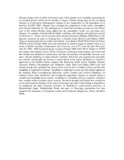Please use this identifier to cite or link to this item:
https://cris.library.msu.ac.zw//handle/11408/1479| Title: | Traditional adaptation mechanisms to climate change and variability among women pastoralists in South-west Zimbabwe. | Authors: | Matsa, Mark Matsa, Winniefridah |
Keywords: | Climate change,women pastoralists, South-West Zimbabwe. | Issue Date: | 2013 | Series/Report no.: | Impacts of climate change and variability on pastoralist women in Sub-Saharan Africa.;p.297-343. | Abstract: | Climate change refers to shifts in the mean state of Ihe climate or its variability, persisting for an extended period, which can be decades or longer. Climate change may be due to natural changes or to persistent anthropogenic changes in the composition of the atmosphere or in land-use [USAID 2007). Humans have changed the composition of the earth’s atmosphere since the pre-industrial era. The unabated use of fossil fuel currently accounts for over 80 per cent of the carbon dioxide being added into the atmosphere. Land- use and land cover changes, for example, clearing land for timber, ranching, crop farming and settlement account for between 15 - 20 per cent of current carbon dioxide emissions (Zhakata 2008).Many of the regional variations in types of farming have a climatic origin (Bowen and Pallister 2000). Types of farming depend on weather and climate. According to World Wide Fund for Nature (WWF) (cited in Chenje 2000), there are indications of climate change in southern Africa as a result of global warming. Temperatures have risen by over 0.5°C over the past 100 years, with the 1990 - 2000 decade being the warmest (Chenje 2000; FAO 2004). Studies bv WWF also project that southern Africa will be affected by warming in both summer and winter and that rainfall may diminish in certain areas and that soil moisture will probably decrease even more with the doubling of carbon dioxide. Southern Africa has also experienced noticeably less rainfall, and drought has become a serious threat in the region. Reduction of rainfall is significant in the Zambezi Basin countries like Botswana, South Africa, Namibia, Zambia, Tanzania, Malawi, Mozambique and Zimbabwe. Hirji. Maro and Chiuta (2002) note that climate change and variability has always been a fact of life in southern Africa and that this variability is expected to increase. Variability is expected to occur over the interior upland of the Zambezi Basin encompassing Botswana, eastern Zambia and western Zimbabwe. In southern Africa both subsistence and commercial agriculture depend on rainfall which is variable and unreliable across regions. In addition to variability between countries, rainfall is also variable within a country across seasons. Recurrent drought and floods have resulted in severe and localised shortages of the main cereal crops and other foods leading to dependence on traditional and other economic activities. In Zimbabwe’s south-western provinces of Matabeleland South, Matabeleland North and parts of Masvingo pastoralism has thus remained the backbone of household wealth and livelihoods (Hargreaves, Bruce and Beffa 2004) | URI: | http://hdl.handle.net/11408/1479 | ISBN: | 9789970252367 |
| Appears in Collections: | Book Chapters |
Files in This Item:
| File | Description | Size | Format | |
|---|---|---|---|---|
| traditional adaptation.pdf | Background | 12.87 kB | Adobe PDF |  View/Open |
Page view(s)
38
checked on Apr 9, 2025
Download(s)
16
checked on Apr 9, 2025
Google ScholarTM
Check
Altmetric
Items in MSUIR are protected by copyright, with all rights reserved, unless otherwise indicated.



